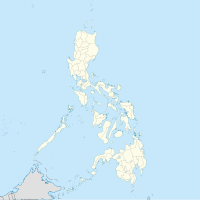
Negros Occidental, officially the Province of Negros Occidental, is a province in the Philippines located in the Negros Island Region. Its capital is the city of Bacolod, of which it is geographically situated and grouped under by the Philippine Statistics Authority, but remains politically independent from the provincial government and also one of the two regional centers in Negros Island Region. It occupies the northwestern half of the large island of Negros, and borders Negros Oriental, which comprises the southeastern half. Known as the "Sugarbowl of the Philippines", Negros Occidental produces more than half the nation's sugar output.

Bacolod, officially the City of Bacolod, is a 1st class highly urbanized city in the Negros Island Region in the Philippines. With a total of 600,783 inhabitants as of the 2020 census, it is the most populous city in the Negros Island Region and the second most populous city in the entire Visayas after Cebu City.

Tayasan, officially the Municipality of Tayasan, is a 3rd class municipality in the province of Negros Oriental, Philippines. According to the 2020 census, it has a population of 38,159 people.

Bago, officially the City of Bago, is a 2nd class component city in the province of Negros Occidental, Philippines. According to the 2020 census, it has a population of 191,210 people.

Manapla, officially the Municipality of Manapla, is a 2nd class municipality in the province of Negros Occidental, Philippines. According to the 2020 census, it has a population of 55,083 people.

Murcia, officially the Municipality of Murcia, is a 1st class municipality in the province of Negros Occidental, Philippines. According to the 2020 census, it has a population of 88,868 people. It is 17 kilometres (11 mi) east of Bacolod.
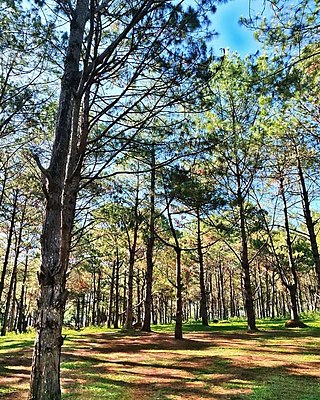
Don Salvador Benedicto, officially the Municipality of Don Salvador Benedicto or simply Salvador Benedicto and abbreviated as DSB, is a 4th class municipality in the province of Negros Occidental, Philippines. According to the 2020 census, it has a population of 26,922 people.

Silay, officially the City of Silay, is a 3rd class component city in the province of Negros Occidental, Philippines. According to the 2020 census, it has a population of 130,478 people.

Talisay, officially the City of Talisay, is a fourth class component city in the province of Negros Occidental, Philippines. According to the 2020 census, it has a population of 108,909 people.

Victorias, officially the City of Victorias, is a 4th class component city in the province of Negros Occidental, Philippines. According to the 2020 census, it has a population of 90,101 people.
The Interim Batasang Pambansa was the legislature of the Republic of the Philippines from its inauguration on June 12, 1978, to June 5, 1984. It served as a transitional legislative body mandated by the 1973 Constitution as the Philippines shifted from a presidential to a semi-presidential form of government.

DYKB-TV, channel 8, is a television station of Radio Philippines Network. Its studios are located at Purok KBS, Pta. Taytay Road, Sum-ag, Bacolod, while transmitter is located at Mt. Canlandog, Murcia, Negros Occidental.
The Ramon Torres National High School (RTNHS) (Filipino: Pambansang Mataas na Paaralang Ramon Torres) is one of seven public secondary schools in the city of Bago, in Negros Occidental, Philippines.

Metro Bacolod is the 8th-most populous and the 6th-most densely populated metropolitan area out of the 12 metropolitan areas in the Philippines. This metropolitan area as defined by the National Economic and Development Authority (NEDA) has an estimated population of 840,170 inhabitants as of the 2020 official census by the Philippine Statistics Authority.
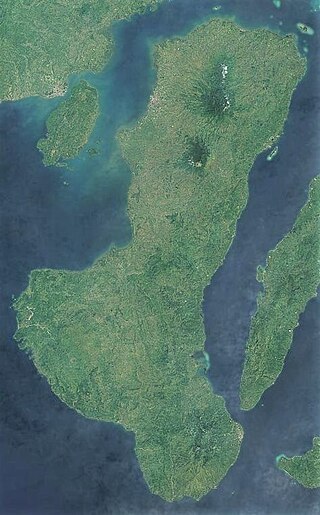
Negros is the fourth largest and third most populous island in the Philippines, with a total land area of 13,309 km2 (5,139 sq mi). The coastal zone of the southern part of Negros is identified as a site of highest marine biodiversity importance in the Coral Triangle.
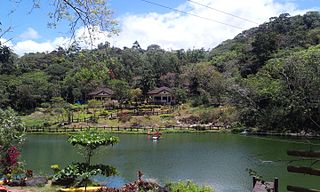
Mambukal Resort, officially the Township of Mambukal or simply known as Mambukal, is a resort township located within the boundaries of the municipality of Murcia, Negros Occidental. As a township, it is directly governed by the Provincial Government of Negros Occidental, which also manages Mambukal Mountain Resort in the 6-hectare townsite near Brgy. Minoyan. The resort is owned and managed by the Provincial Government of Negros Occidental under its Economic Enterprise Development Department.
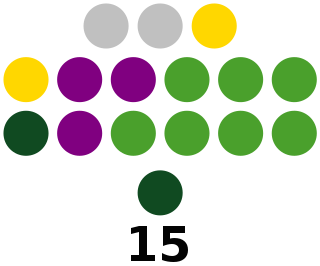
The Negros Occidental Provincial Board is the Sangguniang Panlalawigan of the Philippine province of Negros Occidental.

Granada is a former town and constituent barangay of Bacolod. Located on the easternmost portion of the city, it borders Northern Negros Natural Park.
Negros Electric and Power Corporation, or simply known as Negros Power, is an electric power distribution company in the Philippines. One of the three major electric power distributors in Negros Occidental, it was incorporated on July 31, 2024 to supersede CENECO. It serves the cities of Bacolod, Talisay, Silay and Bago, and the municipalities of Murcia and Don Salvador Benedicto, all of which are situated in Negros Occidental.

